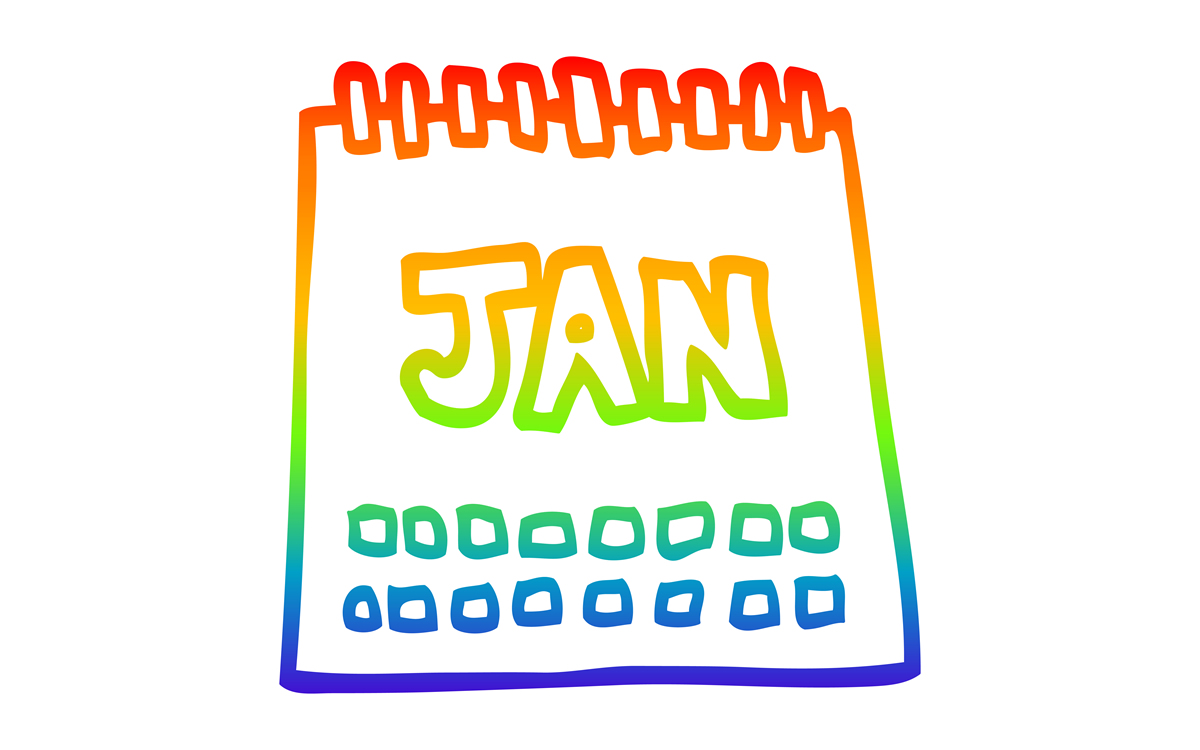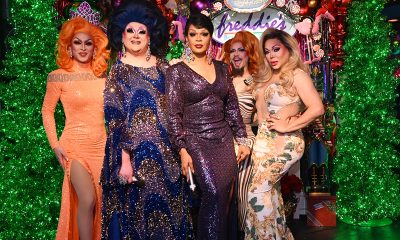Arts & Entertainment
‘RuPaul’s Drag Race’ world tour stops in D.C. on Aug. 6
‘WERQ the World’ returns live drag performance to country’s largest stages

Some of the most popular queens from “RuPaul’s Drag Race” will perform live at National Harbor outside D.C. on Aug. 6 as part of the official “WERQ THE WORLD”tour.
In recent months, drag queens have received significant media attention, much of it from right-wing figures criticizing events like Drag Queen story hours and brunches. However, the colorful, creative performances continue to be wildly popular, and this year’s “WERQ THE WORLD” tour marks the return of RuPaul’s live U.S. tour after a COVID-enforced hiatus.
“In this year’s live production, an experiment gone wrong sends audiences spiraling through time with no way of returning to 2022,” publicity representative Jeff Dorta said in an email to the Blade. “The queens will whisk fans on a magical journey through iconic periods of history in hopes of returning them safely home.”
The Blade spoke with Daya Betty, a Season 14 finalist on “RuPaul’s Drag Race” and one of the queens who will be performing in D.C., who talked about getting started in drag, her “WERQ THE WORLD” experience so far and how drag performance unites audiences.
“I’m a Type One diabetic — that’s actually where my name comes from — and I started out in a small town called Springfield, Missouri,” Betty said. “There’s not a lot going on there, except for a college and lots of little dive bars, which is actually where I got my start. I didn’t get my start in a gay bar like a lot of other drag queens do. I got started in a biker bar, which is pretty fun and very telling of the Midwest.”
“Being in the Midwest and growing up queer, you kind of have to create your own family with your own friends and build your own community,” Betty continued. “That’s really where my passion for drag stemmed from and what caused me to audition for the show.”
BLADE: Drag has gotten a lot of media attention lately — some of it negative. In your experience, what is the best part of being a drag queen?
DAYA BETTY: Being from a small town, I didn’t really see a lot of queer people on TV or in magazines, I felt like I was kind of sheltered away from that. So, the fact that drag queens are literally being showcased on TV shows, on billboards, in fashion spreads, they’re walking in fashion week — I think it’s cool to see not only drag in the regular sense but drag in the mainstream and in common things.
It’s so true what people say — as long as we are putting ourselves out there and we’re letting our faces be shown, there’s always going to be critics and people that that don’t want to look at us. But I think that in a sense this makes us work harder, and when we do get to be featured in mainstream things, it makes it that much sweeter.
BLADE: What is it like to be part of “WERQ THE WORLD 2022,” and what features make this year’s tour special?
BETTY: It’s not just queens from one particular season of “Drag Race” — you can see queens from as early as season 6. We each have our own personalities, and that is very much reflected in the numbers that we create. That’s something I really like about WERQ THE WORLD — we have a huge say in what we perform, what we do and what we get to showcase — and ultimately just get the best representation of who we are and what we stand for individually.
We did Radio City last night, and I think we almost sold out Radio City Music Hall, so just the fact that that’s a thing right now is insane and super, super cool. It shows the level of professionality that not only the queens have, but everyone — the tech, the crew. We like to say it’s as if drag and a Broadway musical were somehow mashed together. It’s a production, it’s more than just your local bar gig.”
BLADE: Have you had a favorite part of the tour so far?
BETTY: I think just being able to be around people again — being able to see people and being able to connect with people one-on-one. During the pandemic we did a lot of digital drag, but it’s not the same as having a face-to-face performance or a face-to-face conversation. Not to sound too cliché, but really we live off of that live energy that the crowd likes to give us.
Although WERQ THE WORLD did a European tour during summer 2021, this summer is the first time the live tour has performed across the United States since 2019. Daya Betty said that stopping at cities throughout the country has made the world feel much smaller, as she notices what their audiences have in common.
“You think the world is such a big place, but the more you travel around and meet people, you realize that everybody just likes to smile and have a good time,” Betty reflected.
BLADE: How does drag performance bring people together, and what makes it such a beloved space for the LGBTQ community?
BETTY: I think it’s just watching people be authentic and be true to themselves — people putting themselves out there and then being recognized for it and being able to create a career and support themselves financially off it — that’s such a cool thing that we’ve created as a community,” Betty said. “Just like when you watch a television show, you connect with certain characters because you see little parts of yourself in them — I think that’s why.
It is so fabulous to be on a huge stage and have this big platform, but I think at the end of the day, we’re all drag queens; we come from the same place, we all started in bars or local clubs. I think we need to put just as much respect on people that have been on TV or drag queens that are in mainstream media and on local performers as well, because that’s where we all start and that’s where we all learn.

Friday, January 9
Women in Their Twenties and Thirties will be at 8 p.m. on Zoom. This is a social discussion group for queer women in the Washington, D.C. area. For more details, visit Facebook.
“Backbone Comedy” will be at 8 p.m. at As You Are. Backbone Comedy is a queer-run fundraiser comedy show at As You Are Bar DC, where comics stand up for a cause. Each show, a percentage of proceeds go to a local organization – Free Minds DC, a reentry organization for individuals impacted by incarceration. Tickets cost $19.98 and are available on Eventbrite.
Saturday, January 10
Go Gay DC will host “LGBTQ+ Community Brunch” at 11 a.m. at Freddie’s Beach Bar & Restaurant. This fun weekly event brings the DMV area LGBTQ+ community, including allies, together for delicious food and conversation. Attendance is free and more details are available on Eventbrite.
Monday, January 12
“Center Aging: Monday Coffee Klatch” will be at 10 a.m. on Zoom. This is a social hour for older LGBTQ+ adults. Guests are encouraged to bring a beverage of choice. For more information, contact Adam ([email protected]).
Genderqueer DC will be at 7 p.m. on Zoom. This is a support group for people who identify outside of the gender binary, whether you’re bigender, agender, genderfluid, or just know that you’re not 100% cis. For more details, visit genderqueerdc.org or Facebook.
Tuesday, January 13
Coming Out Discussion Group will be at 7 p.m. on Zoom. This is a safe space to share experiences about coming out and discuss topics as it relates to doing so — by sharing struggles and victories the group allows those newly coming out and who have been out for a while to learn from others. For more details, visit the group’s Facebook.
Trans Discussion Group will be at 7 p.m. on Zoom. This group is intended to provide an emotionally and physically safe space for trans people and those who may be questioning their gender identity/expression to join together in community and learn from one another. For more details, email [email protected].
Wednesday, January 14
Job Club will be at 6 p.m. on Zoom upon request. This is a weekly job support program to help job entrants and seekers, including the long-term unemployed, improve self-confidence, motivation, resilience and productivity for effective job searches and networking — allowing participants to move away from being merely “applicants” toward being “candidates.” For more information, email [email protected] or visit thedccenter.org/careers.
The DC Center for the LGBT Community will partner with House of Ruth to host “Art & Conversation” at 3 p.m. at 1827 Wiltberger St., N.W. This free workshop will involve two hours of art making, conversation, and community. Guests will explore elements of healthy relationships with a community-centered art activity. This workshop involves paint, so please dress accordingly. All materials will be provided. For more details, email [email protected].
Thursday, January 15
The DC Center’s Fresh Produce Program will be held all day at the DC Center for the LGBT Community. People will be informed on Wednesday at 5 p.m. if they are picked to receive a produce box. No proof of residency or income is required. For more information, email [email protected] or call 202-682-2245.
Virtual Yoga Class will be at 7 p.m. on Zoom. This free weekly class is a combination of yoga, breathwork and meditation that allows LGBTQ+ community members to continue their healing journey with somatic and mindfulness practices. For more details, visit the DC Center’s website.
Movies
‘Hedda’ brings queer visibility to Golden Globes
Tessa Thompson up for Best Actress for new take on Ibsen classic

The 83rd annual Golden Globes awards are set for Sunday (CBS, 8 p.m. EST). One of the many bright spots this awards season is “Hedda,” a unique LGBTQ version of the classic Henrik Ibsen story, “Hedda Gabler,” starring powerhouses Nina Hoss, Tessa Thompson and Imogen Poots. A modern reinterpretation of a timeless story, the film and its cast have already received several nominations this awards season, including a Globes nod for Best Actress for Thompson.
Writer/director Nia DaCosta was fascinated by Ibsen’s play and the enigmatic character of the deeply complex Hedda, who in the original, is stuck in a marriage she doesn’t want, and still is drawn to her former lover, Eilert.
But in DaCosta’s adaptation, there’s a fundamental difference: Eilert is being played by Hoss, and is now named Eileen.
“That name change adds this element of queerness to the story as well,” said DaCosta at a recent Golden Globes press event. “And although some people read the original play as Hedda being queer, which I find interesting, which I didn’t necessarily…it was a side effect in my movie that everyone was queer once I changed Eilert to a woman.”
She added: “But it still, for me, stayed true to the original because I was staying true to all the themes and the feelings and the sort of muckiness that I love so much about the original work.”
Thompson, who is bisexual, enjoyed playing this new version of Hedda, noting that the queer love storyline gave the film “a whole lot of knockoff effects.”
“But I think more than that, I think fundamentally something that it does is give Hedda a real foil. Another woman who’s in the world who’s making very different choices. And I think this is a film that wants to explore that piece more than Ibsen’s.”
DaCosta making it a queer story “made that kind of jump off the page and get under my skin in a way that felt really immediate,” Thompson acknowledged.
“It wants to explore sort of pathways to personhood and gaining sort of agency over one’s life. In the original piece, you have Hedda saying, ‘for once, I want to be in control of a man’s destiny,’” said Thompson.
“And I think in our piece, you see a woman struggling with trying to be in control of her own. And I thought that sort of mind, what is in the original material, but made it just, for me, make sense as a modern woman now.”
It is because of Hedda’s jealousy and envy of Eileen and her new girlfriend (Poots) that we see the character make impulsive moves.
“I think to a modern sensibility, the idea of a woman being quite jealous of another woman and acting out on that is really something that there’s not a lot of patience or grace for that in the world that we live in now,” said Thompson.
“Which I appreciate. But I do think there is something really generative. What I discovered with playing Hedda is, if it’s not left unchecked, there’s something very generative about feelings like envy and jealousy, because they point us in the direction of self. They help us understand the kind of lives that we want to live.”
Hoss actually played Hedda on stage in Berlin for several years previously.
“When I read the script, I was so surprised and mesmerized by what this decision did that there’s an Eileen instead of an Ejlert Lovborg,” said Hoss. “I was so drawn to this woman immediately.”
The deep love that is still there between Hedda and Eileen was immediately evident, as soon as the characters meet onscreen.
“If she is able to have this emotion with Eileen’s eyes, I think she isn’t yet because she doesn’t want to be vulnerable,” said Hoss. “So she doesn’t allow herself to feel that because then she could get hurt. And that’s something Eileen never got through to. So that’s the deep sadness within Eileen that she couldn’t make her feel the love, but at least these two when they meet, you feel like, ‘Oh my God, it’s not yet done with those two.’’’
Onscreen and offscreen, Thompson and Hoss loved working with each other.
“She did such great, strong choices…I looked at her transforming, which was somewhat mesmerizing, and she was really dangerous,” Hoss enthused. “It’s like when she was Hedda, I was a little bit like, but on the other hand, of course, fascinated. And that’s the thing that these humans have that are slightly dangerous. They’re also very fascinating.”
Hoss said that’s what drew Eileen to Hedda.
“I think both women want to change each other, but actually how they are is what attracts them to each other. And they’re very complimentary in that sense. So they would make up a great couple, I would believe. But the way they are right now, they’re just not good for each other. So in a way, that’s what we were talking about. I think we thought, ‘well, the background story must have been something like a chaotic, wonderful, just exploring for the first time, being in love, being out of society, doing something slightly dangerous, hidden, and then not so hidden because they would enter the Bohemian world where it was kind of okay to be queer and to celebrate yourself and to explore it.’”
But up to a certain point, because Eileen started working and was really after, ‘This is what I want to do. I want to publish, I want to become someone in the academic world,’” noted Hoss.
Poots has had her hands full playing Eileen’s love interest as she also starred in the complicated drama, “The Chronology of Water” (based on the memoir by Lydia Yuknavitch and directed by queer actress Kristen Stewart).
“Because the character in ‘Hedda’ is the only person in that triptych of women who’s acting on her impulses, despite the fact she’s incredibly, seemingly fragile, she’s the only one who has the ability to move through cowardice,” Poots acknowledged. “And that’s an interesting thing.”
Arts & Entertainment
2026 Most Eligible LGBTQ Singles nominations
We are looking for the most eligible LGBTQ singles in the Washington, D.C. region.

Are you or a friend looking to find a little love in 2026? We are looking for the most eligible LGBTQ singles in the Washington, D.C. region. Nominate you or your friends until January 23rd using the form below or by clicking HERE.
Our most eligible singles will be announced online in February. View our 2025 singles HERE.
-

 District of Columbia4 days ago
District of Columbia4 days agoTwo pioneering gay journalists to speak at Thursday event
-

 Colombia4 days ago
Colombia4 days agoBlade travels to Colombia after U.S. forces seize Maduro in Venezuela
-

 a&e features4 days ago
a&e features4 days agoQueer highlights of the 2026 Critics Choice Awards: Aunt Gladys, that ‘Heated Rivalry’ shoutout and more
-

 Virginia4 days ago
Virginia4 days agoLGBTQ groups to join Spanberger inaugural parade




















